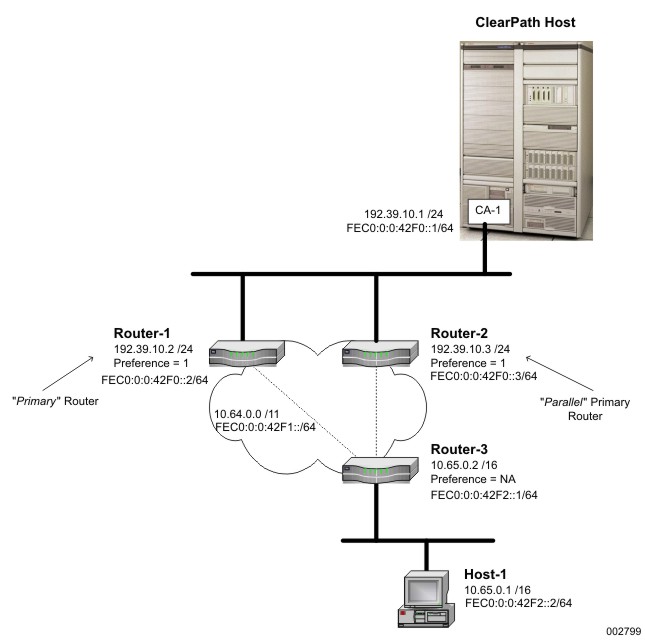In both IPv4 and IPv6 networks, you can assign the same preference value to more than one route and create parallel routes to a destination. Based on the actual values, there can be primary parallel routes and alternate parallel routes. Any combination of the two is also acceptable.
Assume that two primary parallel routes have been configured as shown in Parallel Route Topology.
As shown, there are two possible routes from the ClearPath host to Host-1; one route via Router-1 and a second route via Router-2. Regardless of which route is used in this example, the destination is always two hops away. Here, one route is not better than the other as the destination is the same distance from the local host. You can assign both routes the same preference value. This is what is referred to as having parallel routes — routes with equal preference values.
Since parallel routes are equal routes, this implementation utilizes a balancing algorithm to evenly distribute transport layer dialogs across all primary parallel routes to the same destination. If Router-1 fails, Router-2, which provides a redundant path, seamlessly picks up the dialog load originally assigned to Router-1. Upon the recovery of Router-1, its original dialogs are not moved back to avoid potential route flapping. New dialogs however, are assigned to Router-1. In fact, Router-1 is assigned all new dialogs until a load equilibrium is reached.


